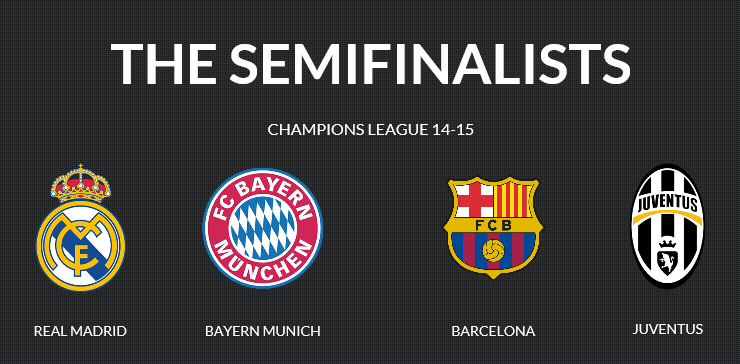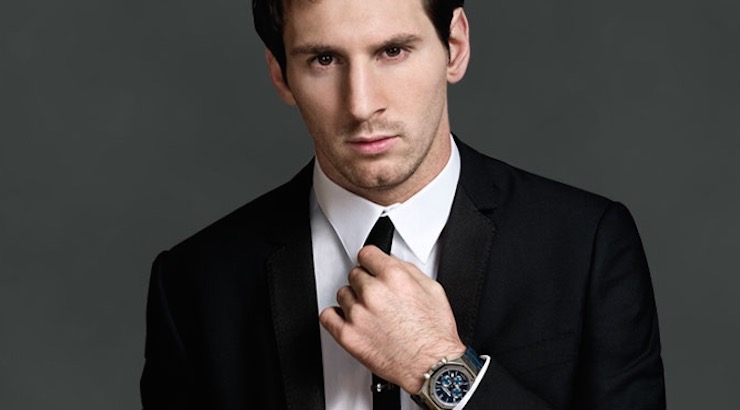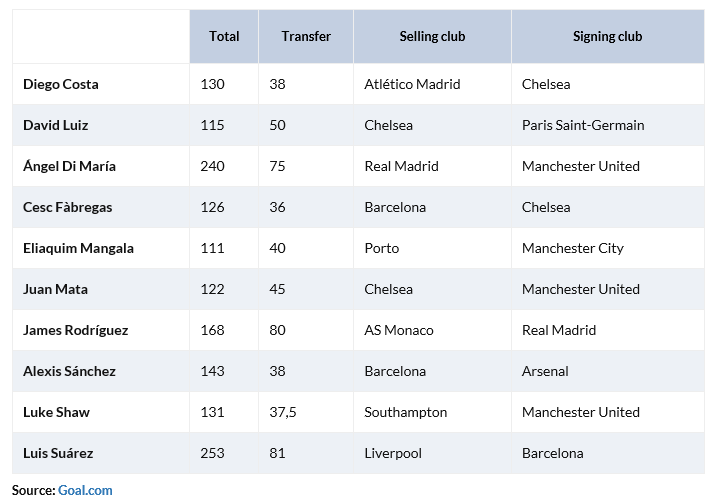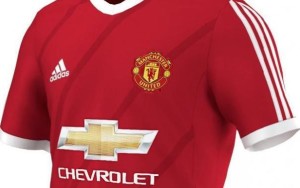Champions League Semi-Finalists Have Joint Yearly Revenues of $2 Billion
The remaining four contestants in this year’s competition are at the top of their respective countries when it comes to finance. As was the case last year, three of this year’s four semifinalists (Juventus being the exception) are clubs that are controlled by their members. And, one surprising fact; the English Premier League, the most profitable concern in the soccer world, has not had a single representative since the quarter-final stage.
 Four of the world’s most powerful sports clubs are in the midsts of battling it out in the semifinal stage of the Champions League, football’s most prestigious competition. These teams represent an aristocracy where venerable members of European high society rub shoulders with the industry’s most sought-after talent. Lionel Messi, Qatar, Nike, Pep Guardiola, Chevrolet and magnates from Indonesia to the U.S all converge on the pitch to demonstrate that football is governed by the simple slogan coined during Clinton’s memorable campaign: “The economy, stupid!”
Four of the world’s most powerful sports clubs are in the midsts of battling it out in the semifinal stage of the Champions League, football’s most prestigious competition. These teams represent an aristocracy where venerable members of European high society rub shoulders with the industry’s most sought-after talent. Lionel Messi, Qatar, Nike, Pep Guardiola, Chevrolet and magnates from Indonesia to the U.S all converge on the pitch to demonstrate that football is governed by the simple slogan coined during Clinton’s memorable campaign: “The economy, stupid!”
According to data analyzed by ticket reselling platform, Ticketbis, football generates astronomical sums of money. The startup looked at different figures to do with ticket sales, television rights, merchandising and sponsorships of the industry’s most influential clubs: Real Madrid, Barcelona, Juventus, Bayern Munich, Manchester United, Manchester City, Arsenal, Chelsea, Liverpool and PSG.
The four teams who qualified for the Champions semifinals are each listed at the top of their respective leagues in terms of wealth and, combined, the clubs have a joint yearly revenue equivalent to over $2 billion. Nevertheless, the differences between these four teams is also significant.
FINANCIAL ELITE
Real Madrid generates the highest income of any club mainly due to the exorbitant sums they receive from exclusive television contracts, 204.2 million euros ($228 million) vs 182.1 million ($203 million) for F.C. Barcelona. The income gap between Real Madrid and their semifinal competition Juventus is 270.1 million euros ($301 million).
 F.C. Barcelona pays their players the highest salaries. Messi, their star player, earns 36 million euros each year not counting bonuses or other sources of income that add up to over 60 million ($67 million) a year. Between salary, premium sponsors, and advertising revenues the Argentine makes an average of 1,827 euros ($2,037) in just 15 minutes.
F.C. Barcelona pays their players the highest salaries. Messi, their star player, earns 36 million euros each year not counting bonuses or other sources of income that add up to over 60 million ($67 million) a year. Between salary, premium sponsors, and advertising revenues the Argentine makes an average of 1,827 euros ($2,037) in just 15 minutes.
MOST EXPENSIVE SIGNINGS
 The most expensive transfer or signing from this season, Luis Suarez, which cost the Catalan club 81 million euros ($90 million) is actually much lower than the top most costly transfer from last season: Gareth Bale. Bale cost Real nearly 100 million euros ($111 million).
The most expensive transfer or signing from this season, Luis Suarez, which cost the Catalan club 81 million euros ($90 million) is actually much lower than the top most costly transfer from last season: Gareth Bale. Bale cost Real nearly 100 million euros ($111 million).
 WORLD’S MOST VALUABLE JERSEY
WORLD’S MOST VALUABLE JERSEY
Among the most striking revenues in football, we find those generated by sports brands and sponsors. Adidas and Chevrolet are paying Manchester United 100 million and 70 million euros respectively ($112 million and $78 million) to feature their logo on the Red Devil’s jersey during the 2015-16 seasons.
A KING WITHOUT A KINGDOM
With qualification for the quarter-final stage of the Champions League complete, the competition threw up a huge surprise; not a single English team was left to contest the trophy this year. This small sporting disaster contrasts with another piece of news, one that comes from the finance quarter and indicates the robust health in which the English league finds itself.
Namely, that the Premier League announced at the start of the year that it had sold the television rights for a sum approaching 7 billion euros, spread over three seasons from 2016 onwards. The sale represented a 70% increase with respect to the previous contract and confirmed the assertion that the top English league is by far the most profitable in soccer. One piece of data serves to illustrate this reality; in a couple of seasons from now, a mid-ranking Premier League club will receive a basic sum of around 130 million euros per season. Currently, this figure would only be surpassed on the continent by Real Madrid and Barcelona.
There is a belief that the Premier League is the most evenly-matched competition in Europe. This is derived more from the economic options available to the clubs than from the variety of champions that the league produces. Every year the smaller clubs in the Premier League sign players who shine for bigger teams in other leagues. That is its great success, stemming to a large extent from a distribution system that shares the profits obtained from television.
The Premier League sells its rights in a centralized manner, as a single entity, just as the Bundesliga, Serie A and Ligue 1 all do. The secret, however, is in the percentages. The distribution in England is straightforward – all twenty clubs receive an equal share of 50% of the revenue while the other half is divided into two; 25% is awarded using a weighted system based on each club’s final league position, and the remaining 25% is allocated by looking at the number of televised matches and the viewing figures obtained by each team. This equation makes the Premier League the competition with the smallest difference between the first and last-placed clubs in terms of revenue received.






